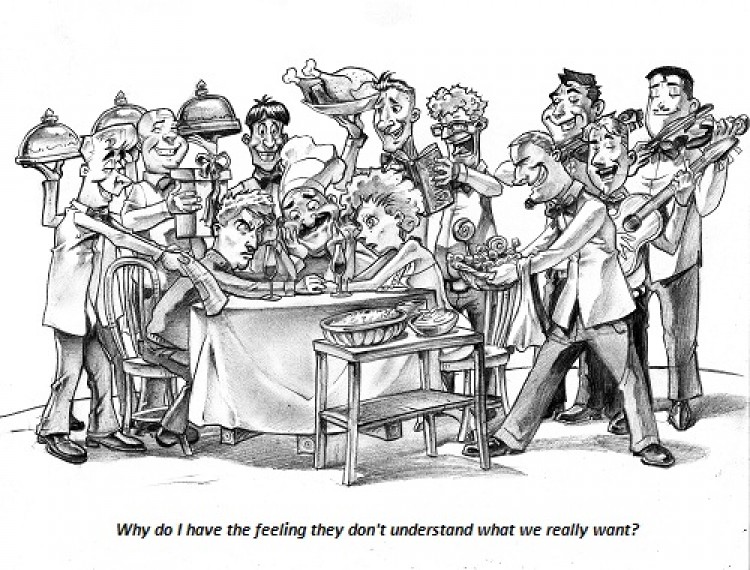I like iced tea. In fact, I like it a lot. Over the course of a hot Houston summer, I bet I drink a thousand glasses of iced tea, each with just the right amount of self-administered artificial sweetener. Because I eat out a lot, and tend to frequent the same places on a regular basis, most of the eateries in my neighborhood are familiar with my voracious thirst for the stuff as a customer.
Over this most recent summer, I took note of a practice related to how some restaurants handle the refilling of my iced tea. Their approach is illustrative of how companies’ policies and practices, many meant to better serve customers in one way or another, can actually cause more problems than they solve.
In particular, I am speaking of the practice of constantly (and automatically) refilling my iced tea glass without asking me even though it’s only partially empty. This is done ostensibly to better serve me as the customer. Some establishments admit it’s done to convey the appearance to other customers that all are well taken care of at the restaurant. In other words, they believe a full glass makes for a happy customer — both in appearance and reality.
Unfortunately, this assumption confuses appearance with reality. More importantly, however, it confuses attention with service.

Whatever the reason for the constant refilling, I an others like me actually consider it a nuisance. You see, each and every time my partially empty glass is refilled, or even just topped off, the tea-to-sweetener ratio is changed. The tea becomes less sweet than I like it; it’s in effect been diluted.
To remedy the problem, I guess what measurement of sweetener is now required to restore the replenished glass of iced tea to a desired sweetness. On balance, I’m wrong as many times as I am right. As a result, the tea is not completely to my liking a lot of the time.
Part of the uniqueness of the situation from restaurants’ standpoint is that glasses containing water and soft drinks can easily be refilled with little-to-no inconvenience to the customer. There’s no dilution problem. Self-sweetened iced tea, on the other hand, is a different animal.
It’s also a messy process, with me stirring as much as eating and half-empty sweetener packages strewn across the table. It’s an eyesore for me and my neighbors — and the very kind of disheveled scene the restaurant wants to avoid. The whole process is a lose-lose for both parties.
Fortunately, there’s a very simple solution: Just ask if I want a refill before filling my glass. Voila! Problem avoided. I’m a satisfied customer. One who tips generously and returns often in light of the service I’ve received.
Some establishments I visit regularly have developed an even more efficient solution. Rather than keeping my single glass full at all times, they bring me a second glass of iced tea as well. I sweeten both immediately to my liking, then proceed to drink one at a time.
Once one glass is empty, I simply start in on the other. In the meantime, a server comes by and refills only the empty glass. I alternate between the two glasses the entire meal, sweetening each only once and enjoying each in full.
The lesson? Believe it or not, I think customers of oilfield suppliers can relate to my iced tea experience, at least in spirit. I explain how in Part 2.







Over this most recent summer, I took note of a practice related to how some restaurants handle the refilling of my iced tea. Their approach is illustrative of how companies’ policies and practices, many meant to better serve customers in one way or another, can actually cause more problems than they solve.
Doug it is simple – they assume they know what you want instead of just asking how can I help you!
Hi Bill –
Yes, and excellent point. The most interesting part of it is that they are usually trained by management to just assume a half-filled glass of tea or cup of coffee should always be refilled. There are a few establishments that train they’re people to ask beforehand, but they are definitely in the minority.
Doug